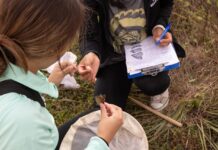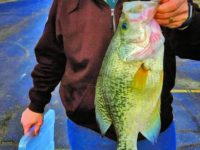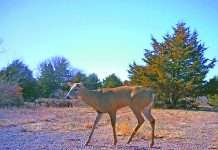Colorado hunters can expect a better than average waterfowl season in 2016-17. Most duck species remain well above long-term averages, thanks to three consecutive years of wet weather and good nesting conditions across the north central United States and Canada. Waterfowl hunting opportunities in Colorado extend from mid-September teal seasons to light goose conservation seasons ending in April.
“Colorado waterfowl seasons are again underway, and the stage is set for some good opportunities for hunters to harvest ducks and geese during the 2016-2017 seasons,” said Jim Gammonley, avian program leader at Colorado Parks and Wildlife (CPW). “Populations of Canada geese that occur in Colorado, which include Rocky Mountain Canada geese west of the Continental Divide, Hi-Line Canada geese east of the Divide and arctic-nesting small Canada geese and cackling geese that winter in eastern Colorado, all remain well above their population objectives. Light geese (snow and Ross’s geese) also continue to be overabundant, and we can expect large numbers to move through the Eastern Plains of Colorado during winter and spring migration.”
Colorado’s waterfowl environments are diverse, ranging from shallow wetlands to large reservoirs. Typically the best hunting is available when a cold front pushes birds south from southern Canada, the Dakotas, Montana and Wyoming.
“As always, numbers, timing of arrival and length of stay of migrant ducks and geese in Colorado is highly dependent on weather,” Gammonley said. “Waterfowl use a variety of habitats throughout the season in Colorado, and it is advisable for hunters to scout several locations that may be selected by ducks and geese during early, middle and late portions of the season. Fortunately, there are many opportunities for waterfowl hunting on public lands (state wildlife areas and state parks, Walk-in Access areas, national wildlife refuges and state trust lands) throughout Colorado.”
The mallard population grew again in 2016 to 11.8 million, up from 11.7 million in 2015, according to the U.S. Fish and Wildlife Service (USFWS), which is similar to the 2015 estimate and 51 percent above the long-term average. Breeding populations of gadwalls and American wigeon were also similar to 2015 numbers, and the breeding population estimate for green-winged teal was a record high of 4.3 million. Rounding out the top five most heavily harvested duck species in Colorado, the 2016 continental breeding population of blue-winged teal (6.7 million) was 22 percent lower than in 2015, but still 34 percent above the long-term average.
For more information about Colorado’s waterfowl seasons and hunting regulations, see the 2016Colorado Waterfowl brochure, available at statewide license agents and parks and wildlife offices or online here. Duck and goose hunting in Colorado requires a small-game license and both federal and state waterfowl stamps, available for purchase through CPW’s online system here. In addition, hunters are required to obtain a Harvest Information Program (HIP) number, available here.
Colorado Outdoors Online, in cooperation with Ducks Unlimited, offers a Waterfowl Resource Guide to help hunters get the most out of their time in the field. For hunting tips and strategies, click here.
For most waterfowl hunters, finding a place to hunt is often more challenging than the hunt itself. Fortunately, Colorado offers a variety of public land hunting opportunities. Here are some information and tips on hunting waterfowl on public land.




